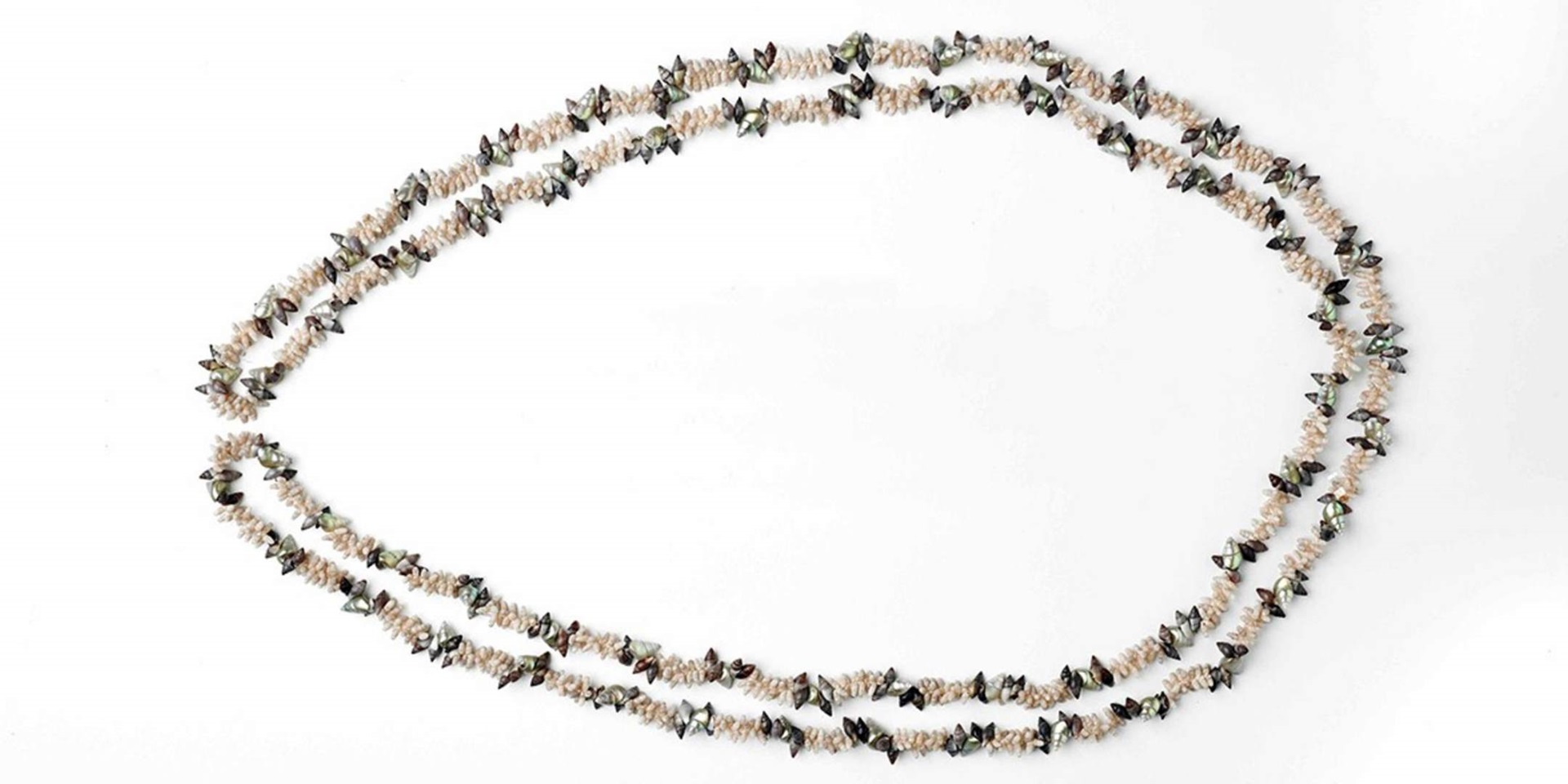
In Tasmania, Palawa (Tasmanian Aboriginal) women string shells into body adornments such as necklaces, bracelets and pendants. This form of shellwork is one of the few cultural practices to have survived the massive disruption to the Indigenous community that occurred in Tasmania over the last two centuries, especially in the devastating colonial wars. Thus contemporary Palawa shellwork is an imposing achievement. It is a women’s tradition stretching back many, many generations, and the techniques of choosing and intricately stringing the tiny shells are passed down to daughters, nieces and granddaughters. It is also a tradition that has evolved over time, with contemporary influences and artistic interpretation.
Different shells can only be collected at certain times of the year, dictated by the seasons and the often wild weather and treacherous waters around Tasmania.
The shells collected include the maireener, toothy, rice, cockle and crow shells. The wonderfully iridescent maireener is the most prized shell used in necklace making, collected only during the spring tides. It is difficult to obtain as it only grows on living seaweed and seagrass located off shore. The shells need to be collected individually within a short three-hour timeframe.
Shell bracelet made by artist Lola Greeno. ANMM Collection 00045957.
Making a necklace with so many small shells requires patience and skill. Particular types, patterns, sizes and colours need to be sorted. Then the necklace pattern can be designed accordingly. The tiny shells are then washed, cleaned and polished to enhance their refractive intensity. Traditionally, minute holes were made using a piece of sharp bone or the pointed eye-tooth of a kangaroo. They were then strung on animal sinew or grass fibre. Necklaces could take up to three or four days to complete and would leave the artist with sore fingers.
Tasmanian shell necklaces were not only body adornments but had an important role in ritual and cultural exchange. They were used as gifts, trade items and tokens of honour. In 1802 a member of the French scientific expedition under Nicolas Baudin, botanist Jean-Baptiste Leschenault de la Tour, described their appearance, construction and – inadvertently – their role in gift exchange:
Several of them crossed the strait [from Bruny Island] … On arrival, [the chief] gave me the necklace he was wearing, which was made of shells of glistening mother-of-pearl, strung on a small cord made of bark and grass. [H]e asked in exchange a necklace of glass beads, which I immediately gave him.
Two hundred years later, Palawa women continue this important association of exchange and gift giving with shell necklaces. As Palawa people’s lives were drastically changed by one of the harshest episodes of colonisation in the history of Australia, they added new meanings to their shellwork.
Nowadays, pollution, over-collecting and fishing activities mean that the maireener shells – especially the larger ones – are becoming increasingly hard to find. Palawa shellwork, which was widely collected from the 19th century as curios and souvenirs – once an unknown part of community sustenance and survival – has, since the 1990s, been much sought after by collectors and institutions around the world as a contemporary cultural practice, assisting Palawa women to maintain this particular important cultural practice.
